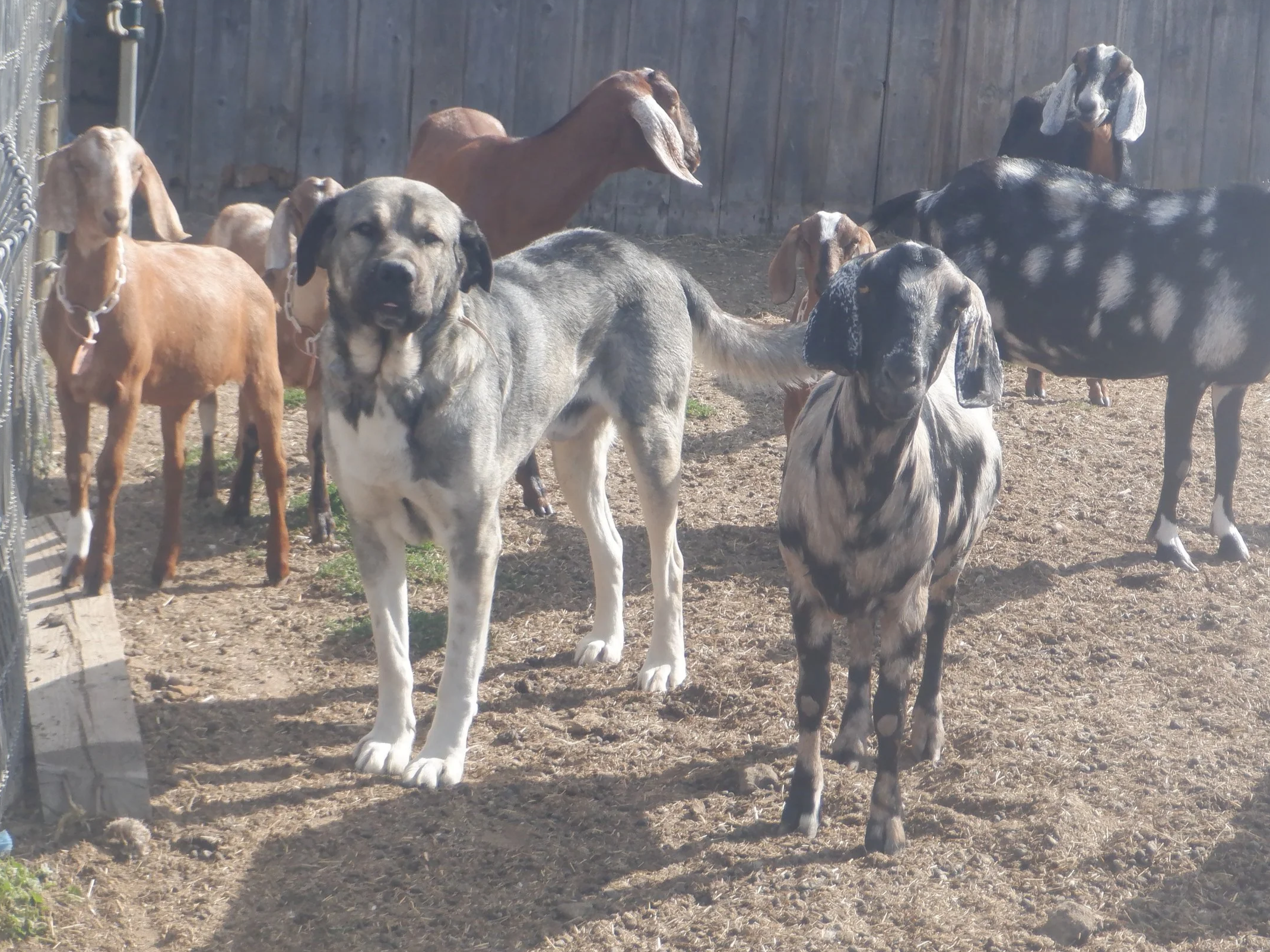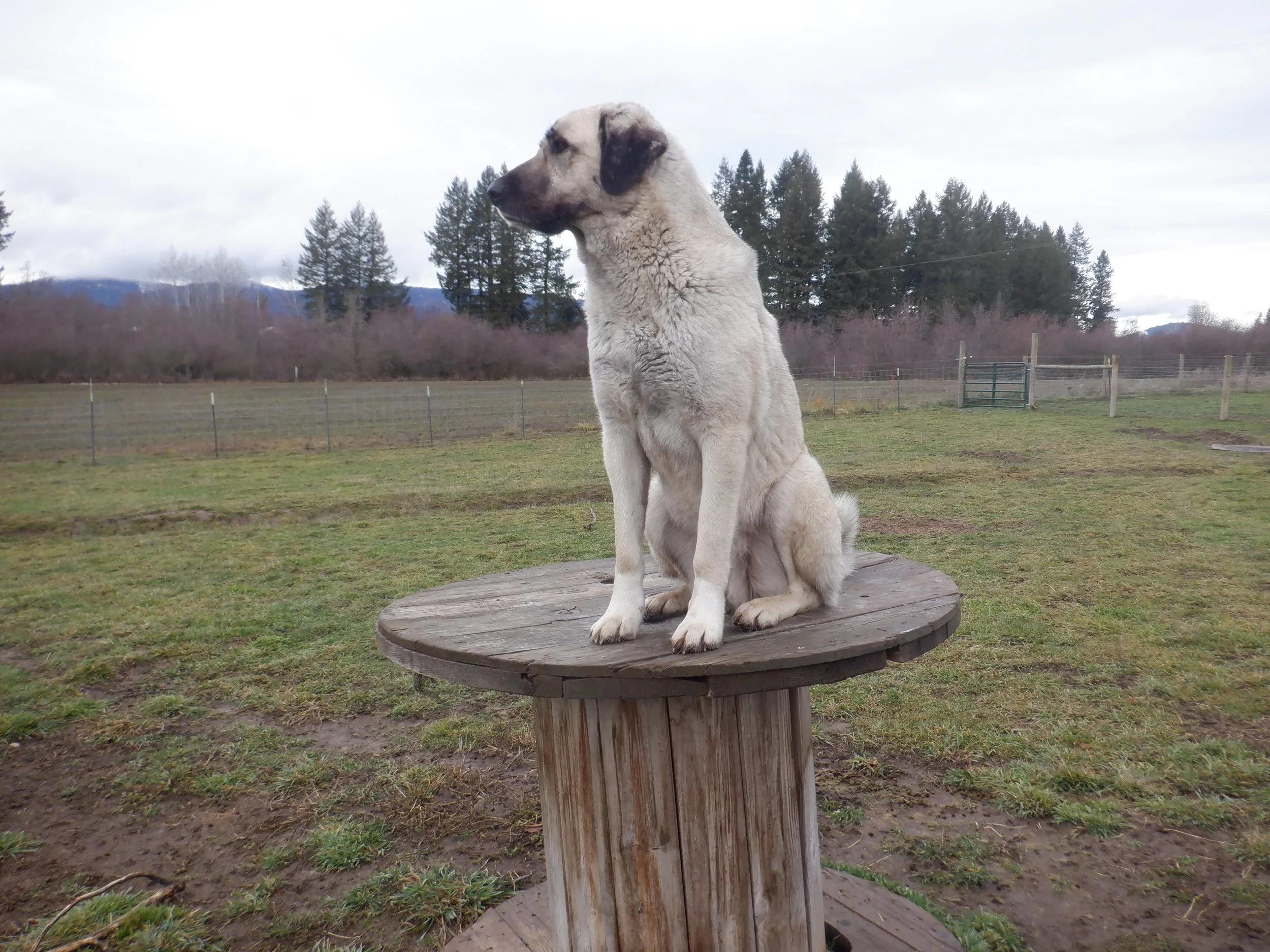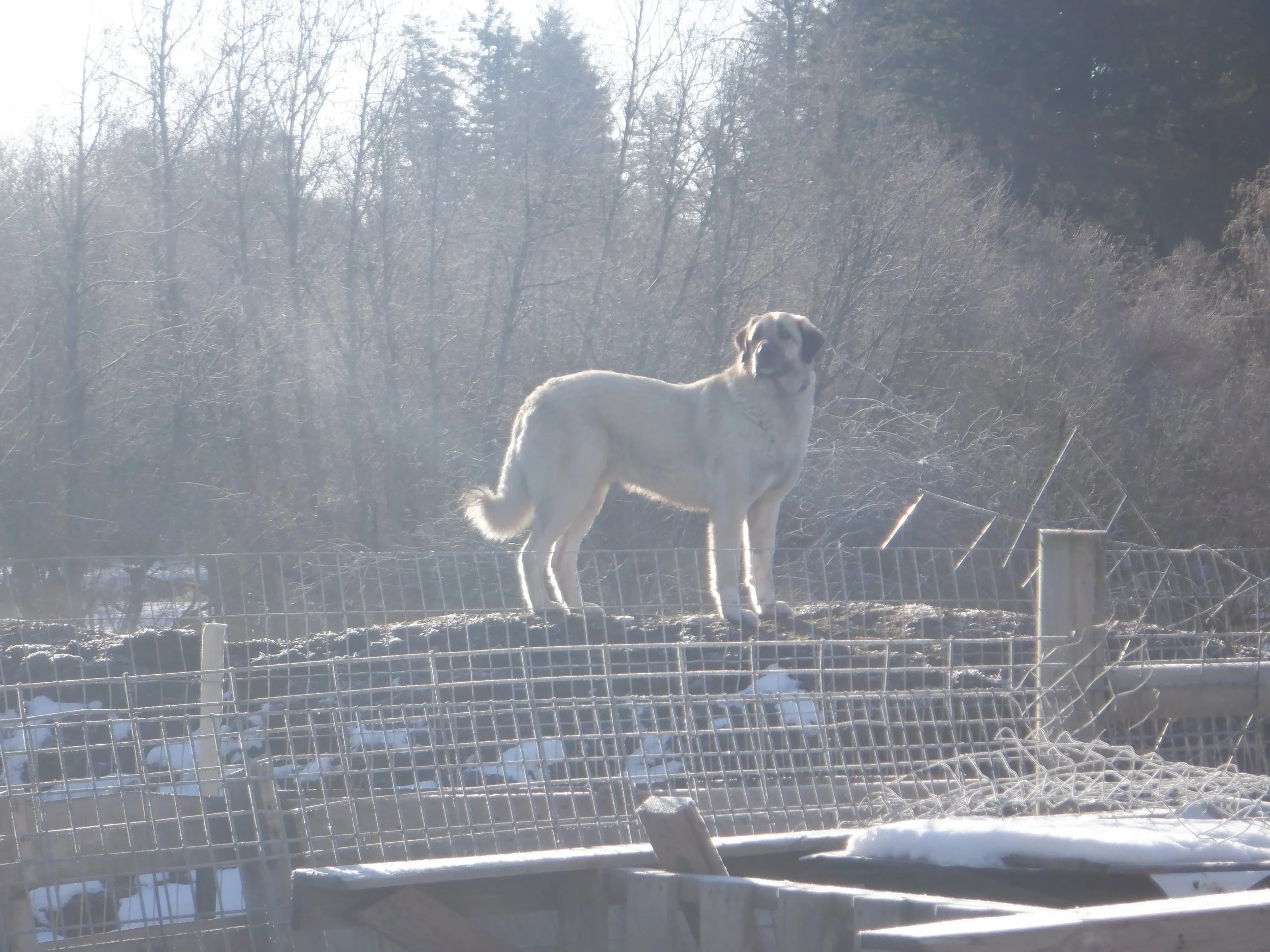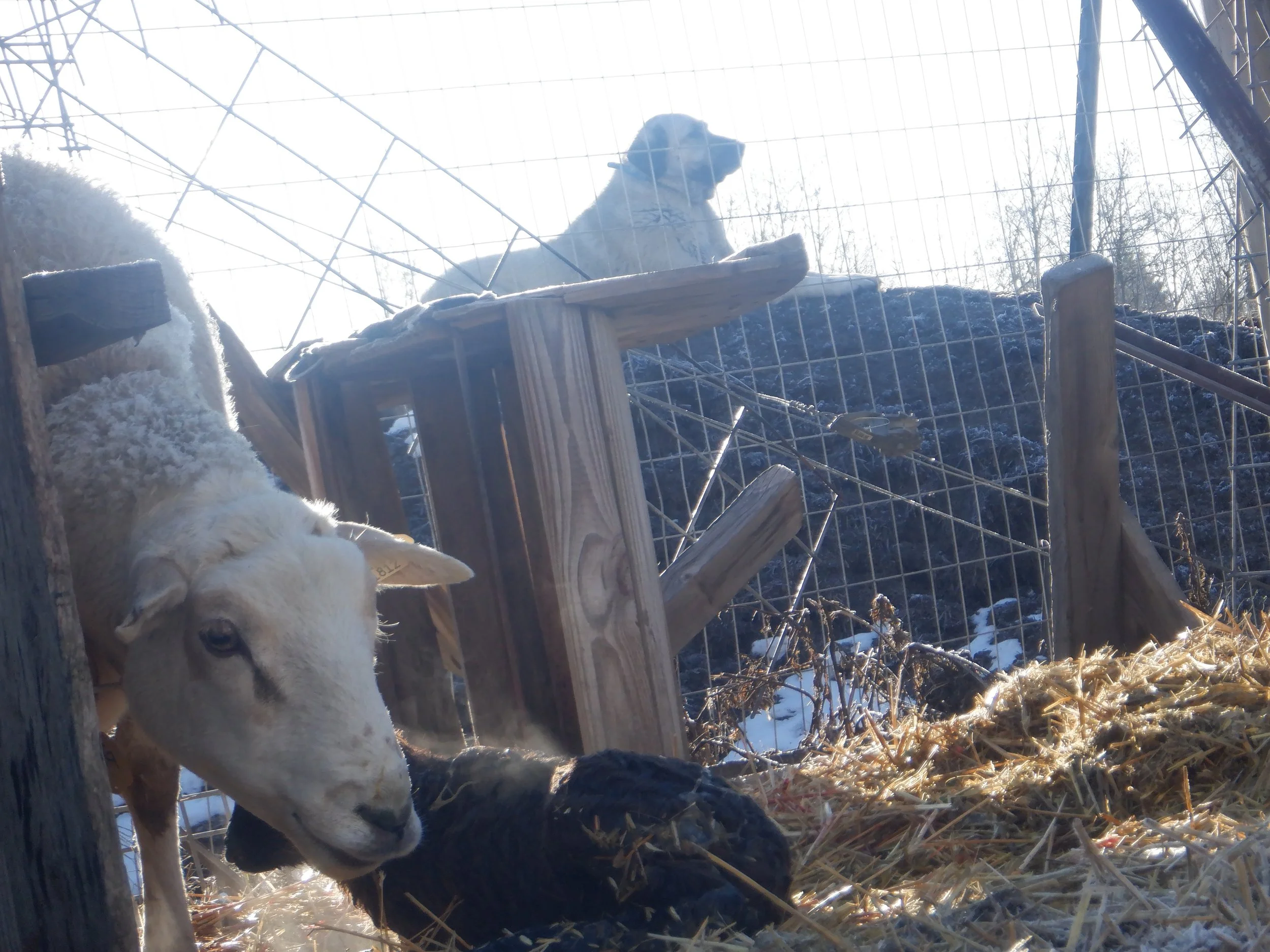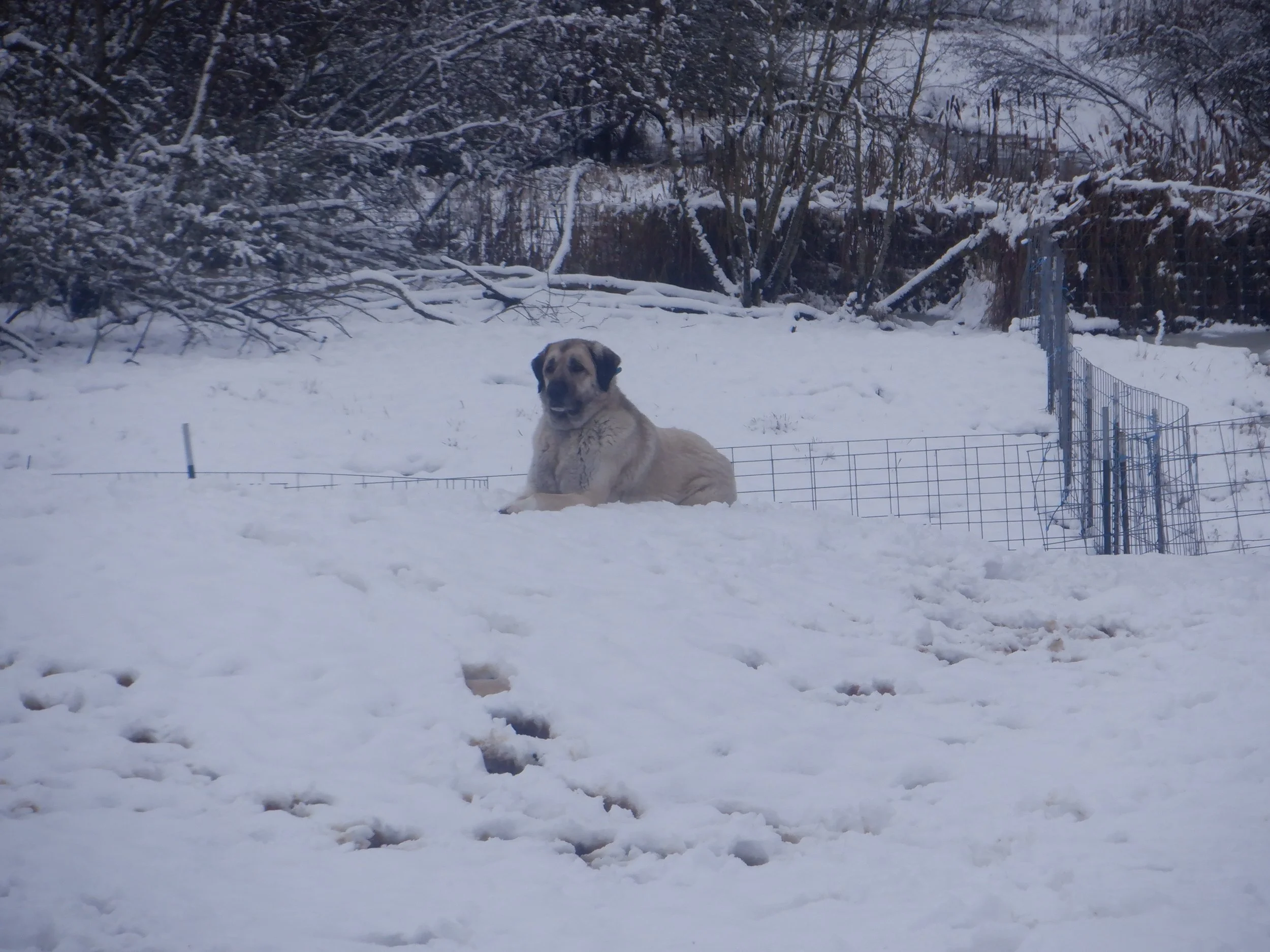Determining if a Livestock Guardian Dog (LGD) is right for you?
The first of many questions you need to ask is, “would it be cheaper to close up my stock each night, rather than buying a dog, training it and feeding it?” Could you handle/develop a way to keep the stock safe each night? Does this match your lifestyle? What predators are you facing? Is it during the day or at night? Do you work on or off farm? For someone who is dealing with small acreages and is home every day, it truly might be easier rather than dealing with a dog that doesn’t understand boundaries or care about your fences. If you’re not grazing out-of-sight of the house, you could be the guardian. This question, in my opinion, is more about economics then protection. How much would it cost to build a closed barn to protect your stock? It seems to me to be far cheaper to build an enclosed containment then purchase a dog, and still have to build up fence containment, and then feed the protection. Now when you begin to move stock further away from the hub of activity on your farm or ranch, then “you” no longer become effective at guarding, and have likely come to the conclusion you require something in those far off locations. This is where an LGD excels! We can see a lot of the ranch from our house windows, but there is also a lot of the ranch I don’t lay eyes on in months, other portions that I only see twice a day at feeding times. I’ve also heard the argument about a guard donkey or llama. You need to remember that both of these are prey animals, and although they have attitude to throw at a predator, at the end of the day, they are only interested in saving their life, not the lives of the rest of your animals. A LGD is the only animal I know who will give its life in defense of its charges.
Cross Creek Kolya out with the sheep. This area is over 40 acres of creek bottom and woods.
The next question is what dog should I get? Did you know that all the LGD breeds where developed over centuries, in the topography and predator environment unique to the country of origin? So, if you have a particular problem, you could research which LGDs match your particular situation best, and look for that one. After all, there are over 30 recognized LGDs around the world. I read about situations on forum sites quite regularly about people who have purchased a dog, only to realize it doesn’t work for their situation. Then they ask questions on how to make it into the “right dog”; difficult to do, to say the least! An Anatolian Shepherd, born to guard and run the mountains of Turkey, is most likely not the right dog for a small parcel with neighbors, but it might be the most available due to its popularity. Another thing to consider is your particular situation and farm dynamic. I recently read a post about a LGD for “re-home, ASAP” because it bit the neighbor kid, and the people selling have children over all the time and do farm tours, etc. These are livestock guardian dogs; not sure what the neighbor kid did (if anything), but we’ve learned over time not to allow people around some of our dogs for just such a reason. Especially children who might not know that their behavior could ramp the dog up into protection mode. There should be a clear separation between your dogs and children playing or friends stopping by. The other issue we normally hear about is LGDs in neighborhoods. One of the ways an LGD lets predators know they are not welcome at your farm/ranch is to bark, and bark, and bark, and bark. Think about that one and how your neighbors are going to respond to it. Now, I understand there are “right to farm” laws out there that will protect you in some circumstances, but you’ll still need to deal with the situation. You also can play an important role in the early development of the dog, when it is barking, going and seeing what the issue is and training the dog what is worth barking at and what isn’t.
Cross Creek Kass (Anatolian Pyrenees mix) Excelled at small acreage locations. Has spent the majority of his life in paddocks under a 3rd of an acre.
Another question I see a lot is which breed will stay on small acreage? The easy answer to this question is “NONE”! The dog will direct its attention to where the threat is coming from, even if that is beyond your fence. I’ve read several published papers on the “Cause of death of LGDs” and the number one reason in all of them is being beyond its perimeter fence and getting hit by a car or shot on a neighbors land. The first thing I’ll say about this question is if you are working with a small patch of land, go back the first question and ask yourself again if it might be easier to lock up your animals each night. How many acres then is too little or too much? That is for you to decide; I’m just pointing out the fact that ranching is normally NOT a get rich venture, and by adding a dog, you’ll only drain your funds more. I do have two dogs that can, and have, operated on less than an acre for extended periods of time. But that isn’t the norm; most were developed to follow herders in the mountains of the country of origin and developed with the physical ability, stamina and desire to defend a large area. My best advice is to harden your fence lines so the LGD doesn’t get a taste of being beyond the fence, then over time it should become comfortable with staying put. I’ve read a lot of people who have said that if the LGD isn’t tight with the stock, then its a bad LGD; if it wanders, it isn’t doing its job…. I’d like to point out again the Anatolian Shepherd; a dog that would prefer to guard from a high-ground position where it can see as much terrain as possible, then chase and run down any predator that comes within eye sight even if that’s a half mile away. This is what it was genetically bred to do. I also understand there are folks out there looking out the window at their Anatolian Shepherd sitting the middle of the flock of sheep on 5 acres, but that isn’t the norm. Below is a bunch of photos of Cross Creek Titan (Anatolian Shepherd) who is normally found sitting on high ground or anything that will give him a better view, guarding from a distance. He will place himself in between where threats normally come from and where the flock is when they are bedded, birthing, sleeping or grazing. When the flock is moving, he is normally leading the effort, and if you watch the sheep, they will not get in front of him. He will walk out 50 to 100 yards, then they will graze up to him, then he’ll move again. I will entertain anyone who wants to show me he is a bad guardian because he isn’t right with the stock!
Xena’s litter in the winter yard. By placing tolerant animals that are friendly to dogs in the yard, we are able to allow the puppies to learn and explore effectively. If you look at the background puppy, you’ll notice the cattle panel over the gate to deny access beyond, beginning the process of the pup learning to stay where its put.
I’ve also seen people list off all the different animal breeds they have and ask what is the best one for the job? Well, all of them; provided they are bonded to the livestock you have. The bonding process seems to be the most overlooked step. It’s an easy one, starting with birth, and moving through the age of exploration or 4 to 10 weeks, then tapering off at approx. 16 weeks. Let me explain; according to canine behavioral science, a puppy will enter the age of exploration at approximately 4 weeks depending on breed. During this time, it will bravely walk up on anything it doesn’t know to learn through smell, hearing and sight. They say it connects portions of the brain that otherwise wouldn’t be connected if it never had the experience. These connections, if made, will be there for life. This is the timeframe of acceptance, provided the experience is positive. As this timeframe tapers off, the puppy starts into a fearful stage in which anything it hasn’t experience, it will avoid. After 8 weeks of age, it becomes increasingly more difficult to get the puppy to accept something new until the window is completely closed around 16 weeks. This doesn’t mean you can “train” the 16 week old puppy to do something or accept something, it just means the dog will never except it as quickly or to the extent it would have if it experienced it during the acceptance timeframe. This is the old saying “you can’t teach an old dog new tricks.” So, this process begins with the first smells and noises a puppy hears, followed by the sight of ewe’s nursing her lamb’s, or a doe and her kids. Its reenforced by the adult dogs’ interactions with the stock, teaching the puppy. Then the behavior is reenforced again by the ewe or the doe accepting the puppy’s presence. You, the Shepherd, play an important role at this point as well. Your job is to make sure the puppy doesn’t suffer under the bad temperament of an angry animal, having a place to call its own, not allowing it to fall into temptation of doing something bad, and is rewarded for being where it should be. So how can something so simple be so difficult to achieve for so many people? It’s because most LGDs are sold to the rancher at 8 to 10 weeks old as the acceptance window is closing, possibly having never experiencing the target animal it’s going to guard. Worse, would be puppy mills without stock, or folks who birth them in their homes, believing an LGD must bond with the humans first, or are using a dam or sire with instinctual issues. Then thrown in the strange new animal as the window of exploration is already closing and you are left with trying to “teach an old dog a new trick”. Add to that, your stock may not have any experience with canines or the experience they do have, is all negative! Don’t even get me started on chickens… Here is a list of the difficulties I see all too often:
1) Puppy bred to a non LGD parent. Could have the instincts of the non-LGD parent.
2) Puppy mixed with two LGDs with very different roles or behaviors (long distance patrolling vs sticky to livestock). Guarding style may not match what you are looking for.
3) Puppy purchased from a breeder who doesn’t have livestock. Puppy mill? Confirmation kennel? Best in show? Missed out on a large portion of bonding. Bonding period started as acceptance window is already closing.
4) Puppy purchased from a breeder without the target animals. Window is already closing at 8 weeks. Or purchasing a bonded adult dog and trying to change the target animal.
5) Purchasing a puppy because you think it’s beautiful instead of the right one for your situation. Ignoring breeding, competence of parents.
6) Trying to introduce a puppy to livestock that “HATES” canines. Livestock runs away, puppy chases to catch-up, puppy is removed for chasing the livestock; (isn’t working right).
7) On and on and on and on…
Others will ask what’s available in the nearby area? This could lead you down a hole you might regret going down. Either a dog that is the wrong fit for you and your situation, or an incomplete bonding process, poor parentage, terrible breeding or so on… The other day I saw an ad for an Anatolian mix with a goldendoodle. Here you have a livestock guardian, mixed with a retriever/ companion animal, mixed with a water dog used for hunting waterfowl and retrieving objects; now, what instincts is this puppy going to have?? Another one was a Belgian Malinois and Anatolian Shepherd mix; need I say more? Both of these situations the puppies where labeled as “Livestock Guardian Dogs” on the sale sheet.
In America, we have been taught from a very young age to desire “cute”, and “pretty things”; so people make choices on what they think looks good rather than what is capable. An LGD isn’t a fashion statement, you are not looking for an accessory to your ensemble! We are also taught to try and save a buck every chance we get, this will most likely lead to the old saying, “good stuff isn’t cheap and cheap stuff isn’t good”! Anyone selling a dog on the cheap, likely isn’t selling a product worth buying.
Cross Creek Xena nursing a litter puppies with one of our ewe’s sharing a compassionate moment.

